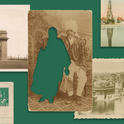It is sadly familiar that India and Pakistan are exchanging fire in Kashmir, attacking sites that each claim are cover for terrorist groups, and unleashing barrages of propaganda at each other and the wider world. At the time of writing Pakistan claims Indian strikes have killed 31 civilians and India blames Pakistan for the deaths of 15 of its citizens, in addition to the 26 who died in the terror attack on 22nd April. Such episodes have erupted intermittently since Partition in 1947. They are unlikely to end even if this episode calms down.
But this round of hostilities is taking place against a radically changed geopolitical background, with a stronger China, a United States in retreat and a United Nations seriously wounded by irreconcilable divisions in its most powerful entity, the security council. Two hardline leaders of nuclear armed states are each claiming victimhood and promising to avenge their people for the transgressions of a deeply hated neighbour. Neither will find it easy to back down.
The key question this time is, who can make them stand down? As the world rehearses once again the nightmare of a South Asian nuclear exchange, France, the UK and the US have called for restraint and offered mediation but will any of them be listened to?
There have been narrow escapes before. In May 1999, as the snows began to melt on the Himalayan peaks of Kargil, Ladakh, Indian troops prepared to return to their high-altitude summer positions. They found they had been occupied.
Who exactly was in occupation was immediately disputed. India saw the hand of Pakistan, and Pakistan claimed the soldiers were Kashmiri patriots. Nothing to do with us, Islamabad said. It was a version of events that Indian officials had heard before and would hear again. Few in Delhi believed it.
The dispute followed a familiar pattern: a provocation, initial skirmishes, escalating insults and growing military confrontation. By late June the standoff had spread from Kargil along the Line of Control. Even more alarming, US intelligence picked up movement in Pakistani nuclear assets. They suspected that nuclear weapons were being prepared. It was time to intervene.
The US president at the time, Bill Clinton, no doubt had other plans for 4th July 1999, but he spent part of that national holiday in the Oval Office with the Pakistani president Nawaz Sharif. Sharif had flown to Washington, desperate for the US to mediate a settlement that he could not achieve on his own. He could barely control his own generals: Pervez Musharraf had planned and executed the occupation of the Kargil positions and would overthrow Sharif in a bloodless coup in October that year.
Clinton told Sharif in no uncertain terms to withdraw his troops from Kargil, and Sharif complied. The possibility that the conflict would go nuclear was never put to the test.
Since then, the US-Pakistan relationship has cooled and Washington is cultivating warmer relations with Delhi, without having the capacity to influence India’s behaviour as it once could with Islamabad. Pakistan’s best friend now is China, India’s regional rival and a power that has rarely intervened in a crisis.
There is one encouraging precedent: Chinese officials insist that Xi Jinping told Vladimir Putin that the use of battlefield nuclear weapons in Ukraine was a step too far. A nuclear exchange between India and Pakistan would be a catastrophe that could potentially alarm China enough to precipitate a quiet intervention. But though China has interests in the region it seems as reluctant as Trump’s America to play the global policeman.
The US vice president, JD Vance, whose wife is Indian, was in Delhi on the day of the April attack. Marco Rubio, the US secretary of state, has said he is monitoring the situation and talking to parties in the region. Trump responded to questions about the crisis with platitudes. Other key visitors to the region since the attack include the foreign minister of Iran, who advertised the trip as an attempted mediation. How effective he or others are will be a test of what to expect in our shifting world order.










